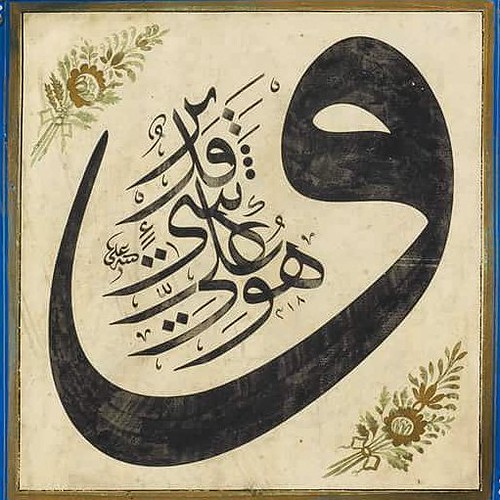Icular Norbert Vischer for the assistance with ObjectJ. More information on ObjectJ can be found at http://simon.bio.uva.nl/object.Author ContributionsConceived and designed the experiments: RYH RDP CG MK MJTM. Performed the experiments: RYH RDP. Analyzed the data: RYH MK MJTM RDP CG. Contributed reagents/materials/analysis tools: RDP CG MJTM. Wrote the paper: RYH MK MJTM.
Hepatitis C virus (HCV) is the major etiological agent of non-A, non-B hepatitis that infects almost 200 million people worldwide [1]. HCV is a major cause of post transfusion and communityacquired hepatitis. Approximately 70?0 of HCV patients develop chronic hepatitis of which 20?0 leads 12926553 to liver disease, cirrhosis and hepatocellular carcinoma [2]. Treatment options for chronic HCV infection are limited, and a vaccine to prevent HCV infection is not available. The virion contains a positive-sense single stranded RNA genome of approximately 9.6 kb that consists of a highly conserved 59 non coding region followed by a long open reading frame of 9,030 to 9,099 nucleotides (nts). It is translated into a single polyprotein of 3,010 to 3030 amino acids [3,4]. A combination of host and viral proteases are involved in the polyprotein processing to generate ten different proteins. The structural 76932-56-4 web proteins of HCV are comprised of the core protein (,21 kDa) and two envelope glycoproteins E1 (,31 kDa) and E2 (,70 kDa) [3?]. E1 and E2 are transmembrane proteins consisting of a large N-terminal ectodomain and a C-terminal hydrophobic anchor. E1 and E2 undergo post translationalmodifications by extensive N-linked glycosylation and are responsible for cell binding and entry [6?5]. Due to the error-prone nature of HCV RNA-dependent RNA polymerase and its high replicative rate in vivo, it shows a high degree of genetic variability [8?]. Based on the sequence heterogeneity of the genome, HCV is classified into six major genotypes and ,100 subtypes. These six genotypes of HCV differ in  their pathogenicity, efficiency of translation/PTH 1-34 web replication and responsiveness
their pathogenicity, efficiency of translation/PTH 1-34 web replication and responsiveness  to antiviral therapy. Genotypes 1 and 2 are the major types observed in Japan, Europe, North America and South-East Asia respectively. Type 4 has been found in Central Africa, Middle East and Egypt, type 5 is found in South Africa and type 6 in South-East Asia [16]. Interestingly, the entire gene sequence of HCV genome shows .30 divergence at the nucleotide level across all the genotypes [16]. Unlike in the other parts of the world, genotype 3 has been found to be predominant in India and infects 1 of the total population, followed by genotype 1 [17]. Although a detailed analysis of the viral genomic organization has led to the identification of various genetic elements and the establishment of subgenomic replicons, the study of viral attachment and entry is still not studied completely due to theMonoclonal Antibodies Inhibiting HCV InfectionFigure 1. Characterization of HCV-LPs. (A) HCV-LPs corresponding to genotypes 3a and 1b were harvested on 4th day post infection and purified as described in Materials and Methods. HCV-LPs were tested with different concentrations of anti-HCV-E1E2 antibody using ELISA. (B) Transmission electron microscopy of HCV-LPs of 1b and 3a as indicated. Scale bar: 200 nm for genotype 1b and 100 nm of genotype 3a; magnification: 10,000X. (Inset shows a single virus particle with 20,0006 magnification). doi:10.1371/journal.pone.0053619.ginability of the virus to propagate efficiently in cell culture an.Icular Norbert Vischer for the assistance with ObjectJ. More information on ObjectJ can be found at http://simon.bio.uva.nl/object.Author ContributionsConceived and designed the experiments: RYH RDP CG MK MJTM. Performed the experiments: RYH RDP. Analyzed the data: RYH MK MJTM RDP CG. Contributed reagents/materials/analysis tools: RDP CG MJTM. Wrote the paper: RYH MK MJTM.
to antiviral therapy. Genotypes 1 and 2 are the major types observed in Japan, Europe, North America and South-East Asia respectively. Type 4 has been found in Central Africa, Middle East and Egypt, type 5 is found in South Africa and type 6 in South-East Asia [16]. Interestingly, the entire gene sequence of HCV genome shows .30 divergence at the nucleotide level across all the genotypes [16]. Unlike in the other parts of the world, genotype 3 has been found to be predominant in India and infects 1 of the total population, followed by genotype 1 [17]. Although a detailed analysis of the viral genomic organization has led to the identification of various genetic elements and the establishment of subgenomic replicons, the study of viral attachment and entry is still not studied completely due to theMonoclonal Antibodies Inhibiting HCV InfectionFigure 1. Characterization of HCV-LPs. (A) HCV-LPs corresponding to genotypes 3a and 1b were harvested on 4th day post infection and purified as described in Materials and Methods. HCV-LPs were tested with different concentrations of anti-HCV-E1E2 antibody using ELISA. (B) Transmission electron microscopy of HCV-LPs of 1b and 3a as indicated. Scale bar: 200 nm for genotype 1b and 100 nm of genotype 3a; magnification: 10,000X. (Inset shows a single virus particle with 20,0006 magnification). doi:10.1371/journal.pone.0053619.ginability of the virus to propagate efficiently in cell culture an.Icular Norbert Vischer for the assistance with ObjectJ. More information on ObjectJ can be found at http://simon.bio.uva.nl/object.Author ContributionsConceived and designed the experiments: RYH RDP CG MK MJTM. Performed the experiments: RYH RDP. Analyzed the data: RYH MK MJTM RDP CG. Contributed reagents/materials/analysis tools: RDP CG MJTM. Wrote the paper: RYH MK MJTM.
Hepatitis C virus (HCV) is the major etiological agent of non-A, non-B hepatitis that infects almost 200 million people worldwide [1]. HCV is a major cause of post transfusion and communityacquired hepatitis. Approximately 70?0 of HCV patients develop chronic hepatitis of which 20?0 leads 12926553 to liver disease, cirrhosis and hepatocellular carcinoma [2]. Treatment options for chronic HCV infection are limited, and a vaccine to prevent HCV infection is not available. The virion contains a positive-sense single stranded RNA genome of approximately 9.6 kb that consists of a highly conserved 59 non coding region followed by a long open reading frame of 9,030 to 9,099 nucleotides (nts). It is translated into a single polyprotein of 3,010 to 3030 amino acids [3,4]. A combination of host and viral proteases are involved in the polyprotein processing to generate ten different proteins. The structural proteins of HCV are comprised of the core protein (,21 kDa) and two envelope glycoproteins E1 (,31 kDa) and E2 (,70 kDa) [3?]. E1 and E2 are transmembrane proteins consisting of a large N-terminal ectodomain and a C-terminal hydrophobic anchor. E1 and E2 undergo post translationalmodifications by extensive N-linked glycosylation and are responsible for cell binding and entry [6?5]. Due to the error-prone nature of HCV RNA-dependent RNA polymerase and its high replicative rate in vivo, it shows a high degree of genetic variability [8?]. Based on the sequence heterogeneity of the genome, HCV is classified into six major genotypes and ,100 subtypes. These six genotypes of HCV differ in their pathogenicity, efficiency of translation/replication and responsiveness to antiviral therapy. Genotypes 1 and 2 are the major types observed in Japan, Europe, North America and South-East Asia respectively. Type 4 has been found in Central Africa, Middle East and Egypt, type 5 is found in South Africa and type 6 in South-East Asia [16]. Interestingly, the entire gene sequence of HCV genome shows .30 divergence at the nucleotide level across all the genotypes [16]. Unlike in the other parts of the world, genotype 3 has been found to be predominant in India and infects 1 of the total population, followed by genotype 1 [17]. Although a detailed analysis of the viral genomic organization has led to the identification of various genetic elements and the establishment of subgenomic replicons, the study of viral attachment and entry is still not studied completely due to theMonoclonal Antibodies Inhibiting HCV InfectionFigure 1. Characterization of HCV-LPs. (A) HCV-LPs corresponding to genotypes 3a and 1b were harvested on 4th day post infection and purified as described in Materials and Methods. HCV-LPs were tested with different concentrations of anti-HCV-E1E2 antibody using ELISA. (B) Transmission electron microscopy of HCV-LPs of 1b and 3a as indicated. Scale bar: 200 nm for genotype 1b and 100 nm of genotype 3a; magnification: 10,000X. (Inset shows a single virus particle with 20,0006 magnification). doi:10.1371/journal.pone.0053619.ginability of the virus to propagate efficiently in cell culture an.